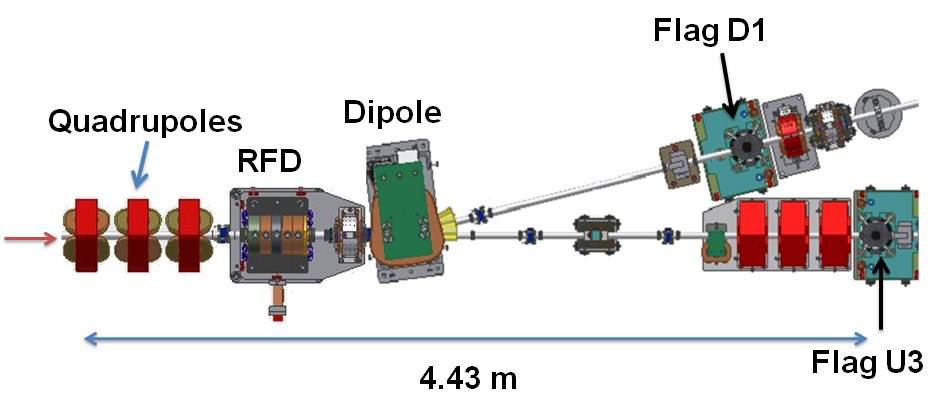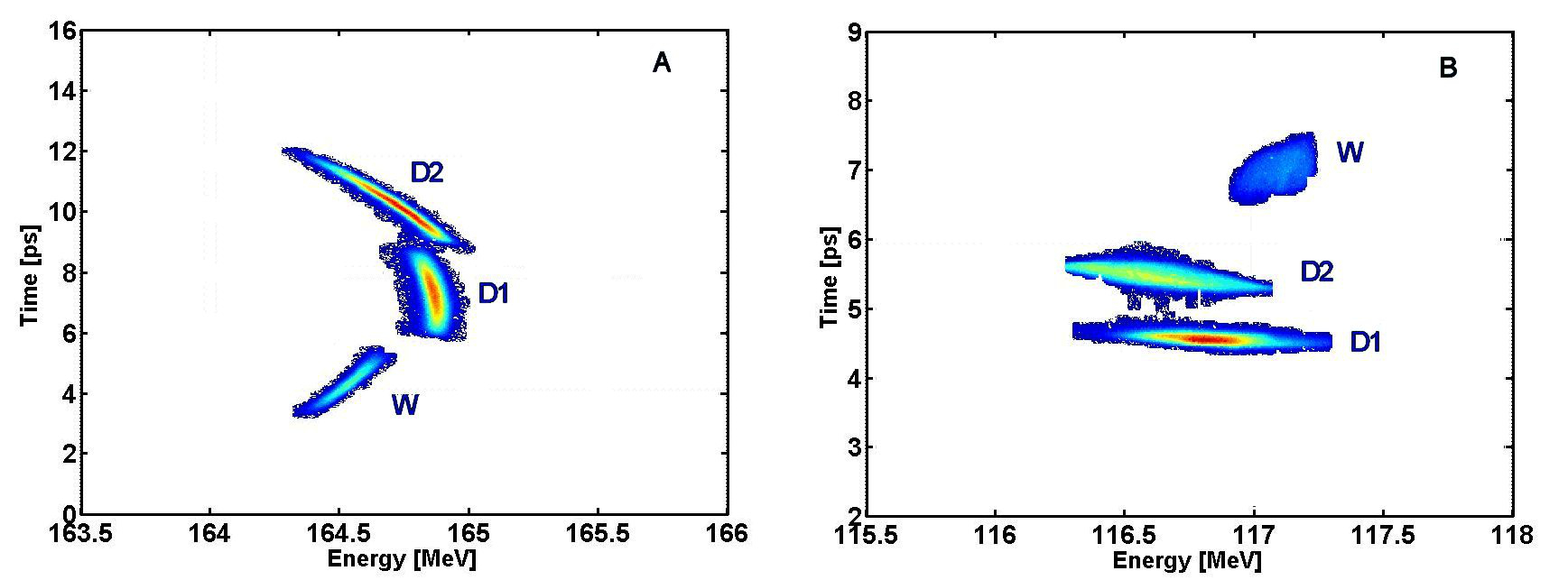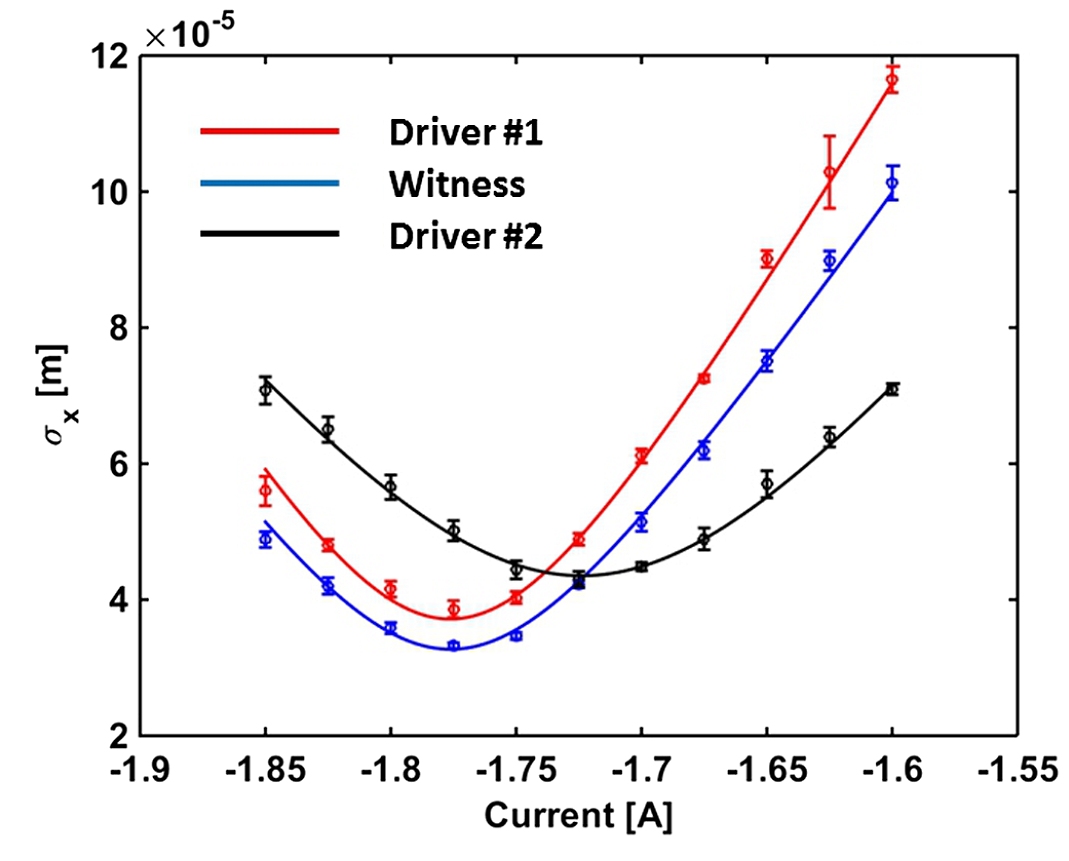Trains of ultrashort electron pulses with THz repetition rate, so-called comblike beams, are assuming an ever growing interest in plasma-based acceleration. In particle-driven plasma wakefield acceleration (PWFA), a train of driver bunches with separation of the order of plasma wavelength, i.e., 300 μm at 1016 cm-3, resonantly excites a plasma wake, which accelerates a trailing witness bunch, injected at the accelerating phase. Comblike beams have great potentialities in different fields of applications. In particular, radiation sources, such as free-electron lasers, THz radiation and Thomson scattering, take advantage from the possibility to tailor electron beams modulated both in time and energy, to customize emission bandwidth and temporal properties. In these scenarios, the manipulation of longitudinal phase space to investigate different bunch configurations, in terms of energy and time separation, is founded on the knowledge of the 6D phase space of each single bunch in the train. Starting from conventional diagnostics, therefore applying well-known tools using more than one diagnostic at the same time, we have completely characterized not only the full 6D phase space of a comblike electron beam with THz repetition rate, but also each single bunch within the train. To our knowledge, this is the first time such a measurement has been performed.

Sketch of the SPARC_LAB diagnostic section beam line. The beam is coming from the left side. The drawing is not to scale. From left to right are visible the quadrupole triplet, the RFD (rf deflector), the dipole and the two view screens used in the measurement (named as flag D1 and U3).
The simultaneous use of RFD and dipole magnet allows a single shot longitudinal phase space measurement

(a) Measured longitudinal phase space with a comblike beam on crest. (b) Same structure at the overcompression phase which allows the bunches to be separated in time. The witness beam is indicated with W and the drivers with D1 and D2.
The most interesting case for PWFA is represented by a comblike beam separated in time, but not in energy. In this case the emittance measurement is performed only on U3 and the RFD can be used to separate the bunches. A quadrupole scan can be performed assuming that the RFD transport matrix is basically a drift in the plane where there is not deflecting voltage, in our case the horizontal plane.

Train of two drivers and one witness bunch with four different values of quadrupole current. The witness is on the top of the picture.

Quadrupole scan on screen U3 with RFD on, in the horizontal plane. Here are reported the fits for every bunch in the train.
With this method we measured the emittance of every single bunch in the direction orthogonal to the deflecting voltage. We always crosschecked all the results of our methods operating in the single bunch regime.
For a train of pulses separated in energy but not in time (very useful for two color FELs) we need a dispersive element, the dipole and the flag D1. The emittance measurement is done taking into account the dipole contribution.

For a comblike beam, the algorithm used to calculate the second momenta of the intensity distribution is applied to each bunch individually, allowing to determine the emittance for both bunches.
The software for separating the images of the comblike beams was developed in LabVIEW environment, while the one dedicated to image analysis and emittance calculation in MATLAB. For each of the acquired images the software generates two masks able to separate the regions of interest (ROI) corresponding to the different beams. The masks are created by setting a variable threshold (dynamically set by the program), which neglects all the pixels with intensity less than the threshold. For each iteration the contiguous regions (called particles) exceeding the threshold are calculated. The routine raises the threshold until only two particles remain which serve to identify the ROI containing the two beams. In this way we can measure emittance in both planes even in case of beam with the same time of arrival.
Publication Highlight:
- “Six-dimensional measurements of trains of high brightness electron bunches”, A. Cianchi et al., Phys. Rev. ST-Acc. Beams vol. 18 n. 8 (2015) pag. 082804, doi: 10.1103/PhysRevSTAB.18.082804
- “Design of Machine Learning-Based Algorithms for Virtualized Diagnostic on SPARC_LAB Accelerator”, G. Latini et al., Photonics, vol. 11 (2024), pag. 516, doi: 10.3390/photonics11060516
Beam diagnostics

